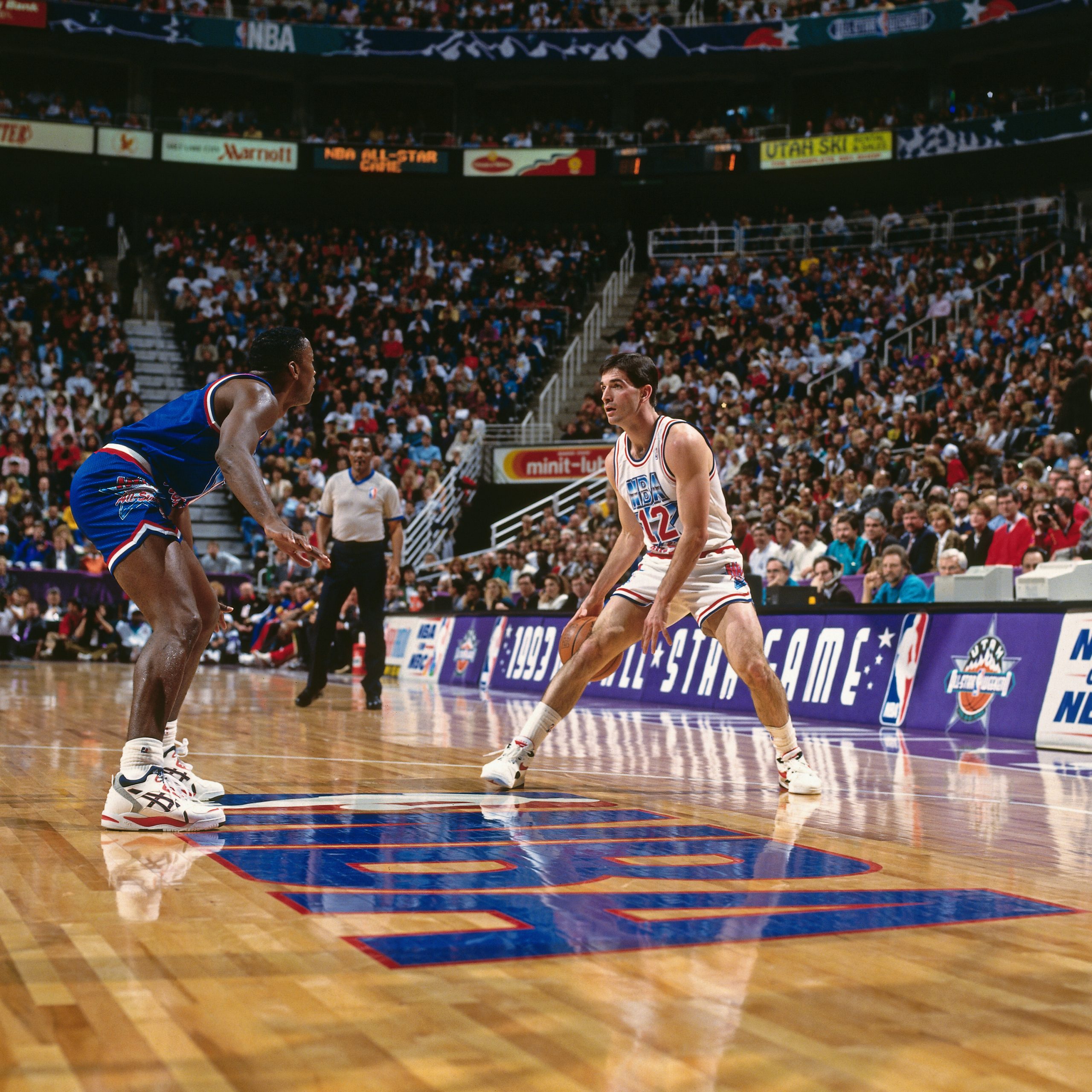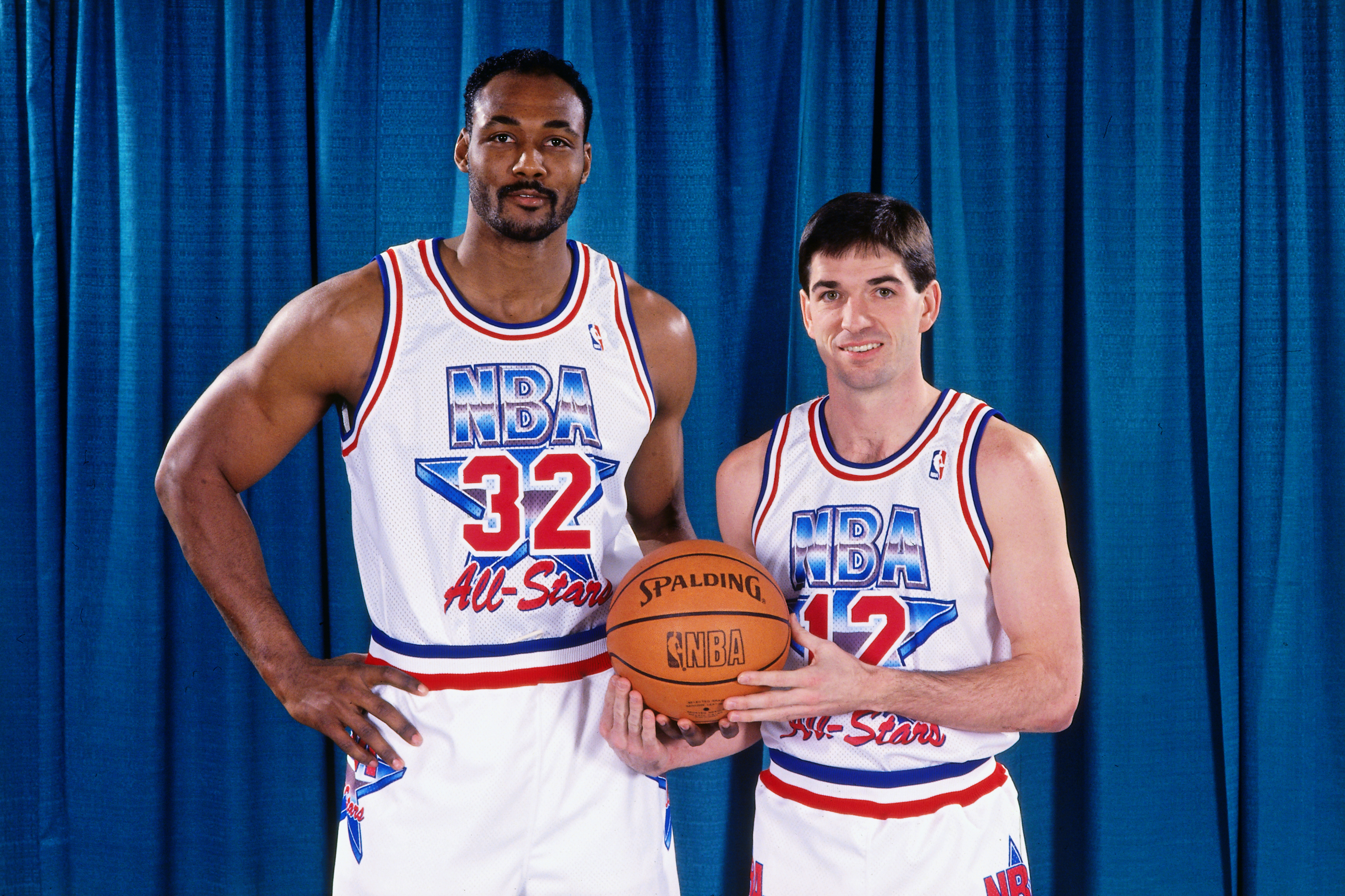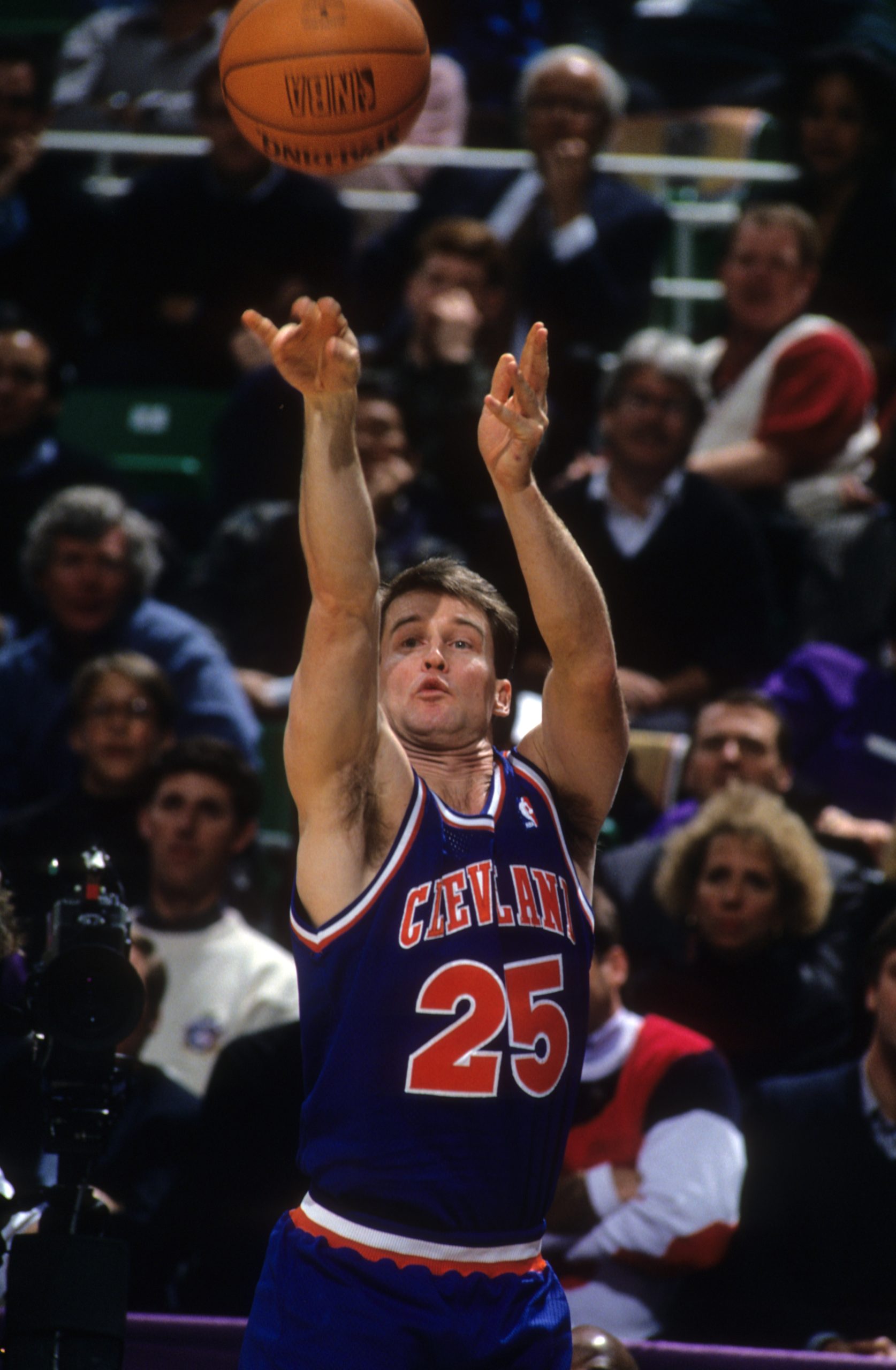This Story Appears in the SLAM All-Star Weekend Newspaper. Shop Now
It’s easy to explain the 1993 NBA All-Star Game in today’s terms: Lauri Markkanen and Jordan Clarkson are MVPs as their team wins an OT classic. Neat as it would be for the locals if Markkanen and Clarkson played a big role in this year’s game—were they even to make it—or even if this was last season and the Gobert-Mitchell partnership starred, that doesn’t actually do justice to what went down at the Delta Center on February 21, 1993, the first and only time Utah has hosted the game until this year.
The ’92-93 NBA season saw two Jazz legends at their steady and consistent best. Power forward Karl Malone, at 29 years old and in his eighth season, played all 82 regular season games, averaging 27 points and 11 rebounds per game for a Jazz team that was on the rise. Many of his points came via feeds from Utah point guard John Stockton, a 30-year-old in his ninth season who led the League in assists at 12 per while also notching 15.1 ppg and 2.4 spg. At that point in their careers, in fact, Malone and Stockton had each only missed a total of four games. “DNP-rest” did not exist back then, to say the least. The two pick-n-roll greats didn’t rest on the day of the All-Star Game that year, either, each starting and playing more than 30 minutes.

Obviously, every All-Star Game is filled with the best the NBA has to offer, but the way that
year’s classic fell in certain players’ career trajectories gave it an extra sheen. And this was despite the fact that this was the first All-Star Game in NBA history (dating to 1951!) without a Celtic or Laker on a roster.
We had to re-watch this joint on YouTube in part because, in something as rare as the Celtic-Laker stat but in reverse, SLAM wasn’t there. And for an awfully good reason—we didn’t exist yet. So we’ve got no funny stories about run-ins with other media or PR staff, over-the-top gifting suites, too many free drinks, off-the-hook Stance Spades parties or Sprinter vans on the loose. Considering SLAM launched before the ’94 All-Star Game took place, this ’93 mid-winter classic belongs in the record books for that reason alone: The Last All-Star Game Before SLAM.
And just to stay on that tangent, the cover of the very first SLAM, which hit stands sometime around Jan 1, 1994, featured Larry Johnson, who started the ’93 All-Star Game, which shows how fly a player he was. And yet…you know a crazy stat about LJ vis a vis the other star(ter)s in the ’93 Game? He’s the only one who is not in the Hall of Fame.
Peep the greatness from the other nine ballers who were on the court for the game’s beginning: Malone, Stockton, Charles Barkley, Clyde Drexler and David Robinson in the West; Michael Jordan, Shaquille O’Neal, Scottie Pippen and Isiah Thomas in the East.

The game was the last of 12 straight Thomas would make in his career. It was the last All-Star appearance Jordan would make before he won his third straight NBA title and then shocked the world with his first retirement. It was the first All-Star appearance of 15 O’Neal would make in his big career. The ’93 All-Star Game also featured classic pivot men Patrick Ewing and Hakeem Olajuwon off the bench, along with the penultimate All-Star appearance for Dominique Wilkins, who appeared in a total of eight as a member of the Atlanta Hawks.
Chock full of dudes known as much for their competitive spirits as their on-court abilities, the game was entertaining and tightly contested from the jump, which the video of the game confirms. With Dick Enberg on play-by-play duties and Mike Fratello and Magic Johnson on color commentary, the early hype around the game focused on Jordan (already well on his way to GOAT status) and Shaq (the first rookie to start an ASG since…Jordan in ’85). When the PA announcer ran through the Western Conference starters, he led with Stockton and closed with Malone, who got by far the biggest applause of anyone. It all felt cute, but not like these were real MVPs-in-waiting.
As was their custom, though, the Jazz stars steadily asserted their influence on the game, wearing down the East with their all-around excellence. Jordan was the leading scorer, notching 30 points and making the biggest pass of the game, when he hit Ewing to complete a perfect pick-n-pop for a game-tying jumper with seconds left in regulation. When the West took control in overtime, however, the writing was on the wall. A strong performance in the fifth period helped Stockton and Malone to final stat lines of 9 points and 15 assists (the only player with double-digit dimes) and 28 points with 10 rebounds, respectively. Within about three seconds of the buzzer sounding to end the game, and before the players could even have been told, Enberg made it official: Stockton and Malone were co-MVPs.

What else happened that weekend? Well, not as much as would happen at later extravaganzas, to be honest. Friday was media day, but MJ didn’t even get to town for that because he was off playing golf (as he would do most years). There was no All-Star Friday night because there was no Rookie Game, Rookie-Sophomore Game, Rising Stars Challenge, etc. That whole concept didn’t exist yet. Like SLAM, that was an invention that the world would need to wait until 1994 for.
All-Star Saturday was a thing, and 1993’s version was, let’s say, average? The Three-Point Shootout was won by Mark Price, which is fun because dude really was a bonkers shooter and because he won the next year, too. Those were the only two three-point shootouts Price was ever in, which is a dope stat.

The Dunk Contest had already fallen from the ’80s highs of MJ vs Dominique but was still a place you might catch a future star do their thing. In ’93, Harold Miner provided a glimpse of what might be, winning the contest as part of a rookie year that saw him, believe it or not, average 10 points in just 19 minutes per outing with the Miami Heat. The dunks and the instant offense were, as of February 1993, enough to make one think maybe the “Baby Jordan” moniker that had been attached to the 6-5, shaved-head-sporting shooting guard was accurate. Alas, by year three of his career, his numbers had fallen off precipitously, and while Miner did join Price in the two-time champ club when he won the ’95 Dunk Contest, he was out of the League for good by ’96. It could be argued the rookie year dunk title was the high-point of his career.
There was also, if our photo research can be believed, some sort of celebrity dunk contest that involved Jaleel White and Mayim Bialik. We literally can’t figure out what was going on there and probably don’t want to. Honestly, all of the Saturday “action” was long-forgotten by the time Sunday’s game reached its exciting climax. As Enberg would say in his second to last line of the broadcast, the game had produced a “Utah Jazz parlay” in the form of the co-MVPs (Enberg’s sign-off that day was “Wayne’s World is next.” The ’90s were on one.), and that’s all anyone in Utah cared about. Malone himself summed things up with a perfect quote after the game. “I guess if you were writing a storybook,” The Mailman said, “this is just about how you’d write it.”
Photos via Getty Images.